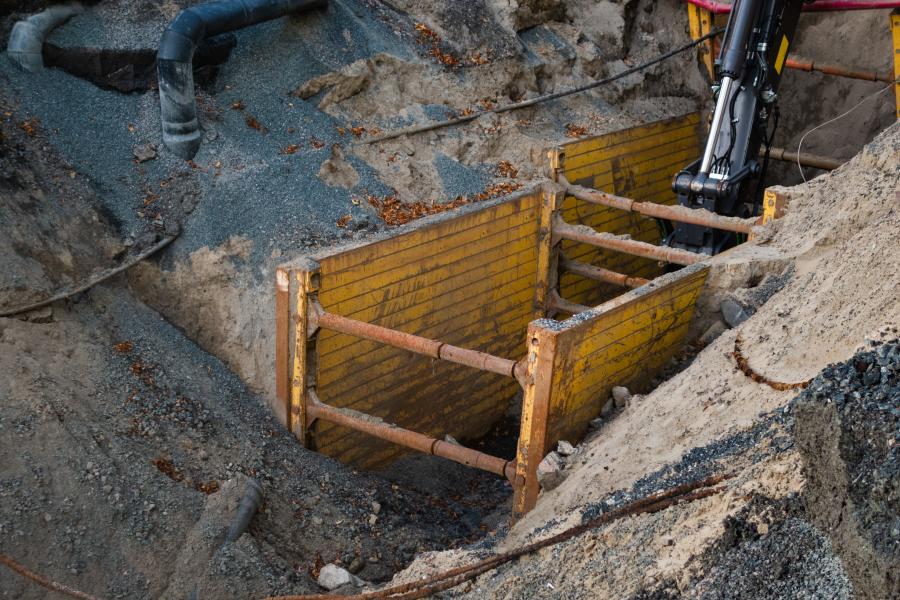The excavation of trenches are an essential element of many construction and engineering sites. They are employed to lay telephone lines, pipes or any other tubular structure that has to be placed deep beneath the ground, such as oil rigs, oil pipelines, etc. Because of the high moisture content of these soils, trench is often a tedious job. This is because it’s challenging to not only remove debris and dirt from surrounding objects but also to ensure security as you may cause serious injuries if you accidently expose your skin.
Trench boxes are needed for all repairs or construction that requires accessing the ground. They can be used to stop the collapse of a structure based on the material and soil quality. Trench boxes are made using steel/aluminum frame to temporarily hold them in place before excavation begins. The grout is secured between two layers when necessary, to ensure that there are no cracks develop when properly placed at the site level.

Pre Installation
Before digging begins It is vital to assess the risks associated with the project. It is vital to know the equipment required and how many individuals are required to access it. Also, reflect on other methods that could have been used in order to complete the work without putting life or limb at risk (such as minimally invasive techniques). Also, a complete risk assessment must be conducted prior to the excavation survey in order to ensure that all risks can be easily identified prior to the excavation. This reduces potential complications in the future.
The depth of the trench is important to think about as well. A 5-foot length of concrete will be able to hold you. If the trench is deeper than it, then shoring, or sloping will be required. But, if the 20-foot deep trench has no straight sides, every building above ground needs to take into account the higher risk of foundation movement.
A ladder, step or ramps should be used to get into the trench. There should be an accessible area of 25 feet of the workers at all times in case the need for emergency assistance arises. In addition, you could also be necessary to check for toxic or low oxygen levels gasses with the use of specially designed boxes known as “trench boxes.” These articulated devices are easy; however they increase the risk of stacking them on top of one another as you do not know the height at which your pile will break through into their vulnerable underbelly.
Care For the trench
1. Check the trench box and support every day for any signs of damage, and any changes.
2. While working on-site everyone should wear their safety gear and be wearing a steel-toed shoe as well as high visibility clothing.
3. Heavy equipment and tools should be placed at least 3 feet away from the edges of any trench.
Extraction
Since the ground around trench boxes moves which makes it more difficult to set up than to remove it. Chain slings may be utilized to extract the soil, while three methods are available for lifting it. The final option is using an overhead crane.
1. Straight Pull: This technique is the most straightforward. Simply attach your sling two points and lift outwithout fussing by using too much force or unnecessary movements.
2. Half Pull Half Pull: Attach the half pull to one end of the trench box, and then lift it as far as you can before moving forward. This will allow you to clear all dirt and debris inside the trench without causing damage to your garden.
3. Single Pull A single chain sling leg to the lifting or extraction point to shift the trench box. Then lift each panel separately with a single pull. Use your pull to remove the trench box.
For more information, click shoring boxes